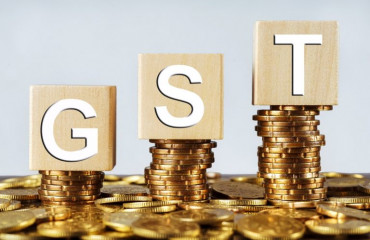
New Delhi: The government should stick to its fiscal deficit target of 5.9% in the current financial year and aim to narrow this to around 5.4% in FY25, a goal that would require boosting revenue receipts and rationalizing spending, industry lobby Confederation of Indian Industry (CII) said.
New Delhi: The government should stick to its fiscal deficit target of 5.9% in the current financial year and aim to narrow this to around 5.4% in FY25, a goal that would require boosting revenue receipts and rationalizing spending, industry lobby Confederation of Indian Industry (CII) said.
"As clouds of uncertainty loom over the global economic horizon, maintaining the balance between economic growth and fiscal consolidation is critical," a CII statement said quoting a senior executive.
The government has a target of limiting it's fiscal deficit to 4.5% of GDP by FY26. Experts expect it to specify a glide path to further limit the gap between receipts and spending met through borrowing to 3% of GDP.
The industry body pitched for a national mission on advanced manufacturing to step up quality and productivity and facilitate technologically advanced production. It also pressed for expanding the scope of production linked incentives to more labour intensive sectors, such as apparel, toys and footwear.
The industry body also suggested that the government could signal reducing the number of Goods and Services Tax (GST) slabs to three.
At present, the basic exemption limit, rebate and tax rates are notified every year through the annual Finance Bills.
Now there are four main slabs other than a list of exempted items and a special rate for precious metals. Signal bringing in products (petroleum products, electricity and real estate) which are currently outside GST, under the GST regime, the industry body said.
This should be accompanied by an aggressive focus on meeting the disinvestment targets by bringing in an element of demand side considerations and creating a three-year schedule for disinvestment, CII said.
Food and fertiliser subsidies which make up the bulk of the subsidies, should be rationalised without impacting the deserving beneficiaries, by better targeting and efficient utilisation, the industry body said.
"Currently the food subsidy program is based on data available from the household consumer expenditure survey, 2011-12. With economic growth and declining poverty, it is important to use more current data for better targeting," the industry body said. It also pitched for moving towards a system in which fertilizer subsidy is given directly to farmers as cash transfer. Now it is given to producers based on sales data captured at the point of sale.
"These measures if implemented could open up space for government to support sustainable growth by increasing the capex by 20% to ₹12 trillion. While this will be a moderation from the growth in the last two years, it compares well with the 12% growth in the pre-pandemic period of FY16 to FY20," CII said.
